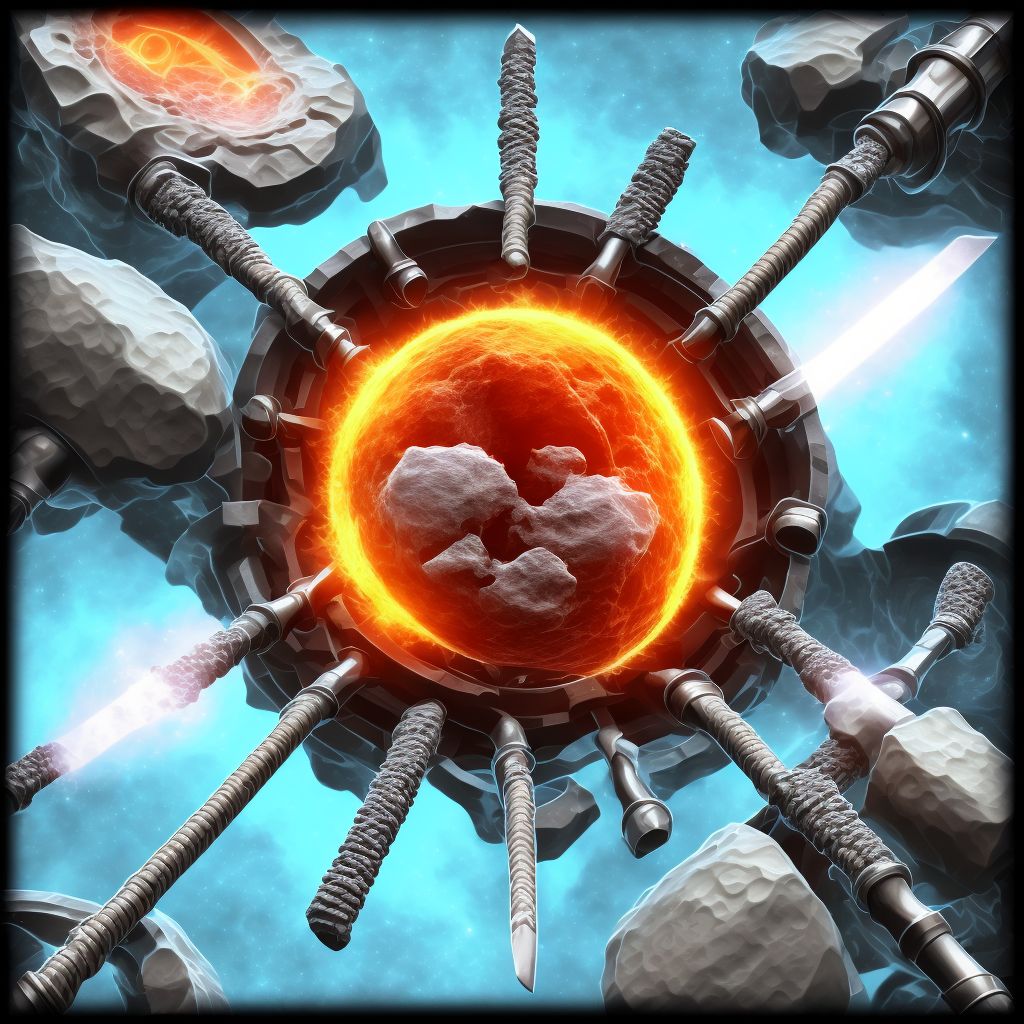
Nondisplaced transverse fracture of shaft of left tibia, subsequent encounter for open fracture type IIIA, IIIB, or IIIC with nonunion Save
ICD-10 code: S82.225N
Disease category: S82.225: Nondisplaced transverse fracture of shaft of left tibia
Nondisplaced Transverse Fracture of Shaft of Left Tibia: Understanding Open Fracture Types IIIA, IIIB, or IIIC with Nonunion
A nondisplaced transverse fracture of the shaft of the left tibia refers to a type of fracture where the bone breaks horizontally across the tibia without any significant displacement. When a nondisplaced fracture occurs, the broken ends of the bone remain in alignment, which can aid in the healing process.
However, in some cases, a nondisplaced transverse fracture can become an open fracture with types IIIA, IIIB, or IIIC, which indicates that the fracture site has become exposed to the external environment. It is important to understand these fracture types and the potential complications associated with nonunion.
- Open Fracture Type IIIA: In this type of open fracture, the skin over the fracture is disrupted, but it does not have extensive soft tissue damage or contamination.
- Open Fracture Type IIIB: Type IIIB open fractures involve significant soft tissue damage, often resulting in extensive loss or periosteal stripping. These fractures may also have contamination, making them more complex to treat.
- Open Fracture Type IIIC: The most severe of the open fracture types, type IIIC fractures involve arterial injury requiring repair. These fractures often require specialized care and immediate medical attention.
Nonunion is a potential complication that can occur when a fractured bone fails to heal properly. In the case of a nondisplaced transverse fracture of the shaft of the left tibia with open fracture types IIIA, IIIB, or IIIC, nonunion can be a significant concern.
Nonunion may result from various factors, including inadequate immobilization, poor blood supply to the fracture site, infection, or excessive movement of the fractured bone ends. It is crucial to address these issues promptly to promote proper bone healing and prevent further complications.
While treatment options for this condition should be discussed with a healthcare professional, it is important to understand the nature of the injury and the potential complications associated with nonunion in order to make informed decisions. Seeking proper medical attention and adhering to the recommended treatment plan can greatly improve the chances of successful healing and recovery.
Treatment of Nondisplaced transverse fracture of shaft of left tibia, subsequent encounter for open fracture type IIIA, IIIB, or IIIC with nonunion:
Treatment Options for Nondisplaced Transverse Fracture of Shaft of Left Tibia, Subsequent Encounter for Open Fracture Type IIIA, IIIB, or IIIC with Nonunion
A nondisplaced transverse fracture of the shaft of the left tibia, subsequent encounter for open fracture type IIIA, IIIB, or IIIC with nonunion is a complex injury that requires careful treatment. The severity of the fracture,...
To see full information about treatment please Sign up or Log in